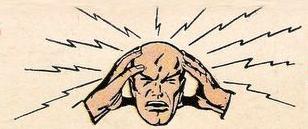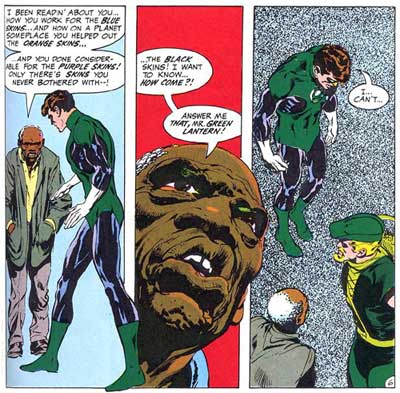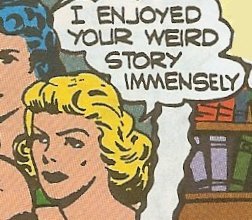 ARRRGH!!!
ARRRGH!!!
That was my first thought when I decided to I wanted to write about comics on a regular basis. “ARRRGH!!!”. Why? Because I have too much to talk about and too many topics. Artists? Collecting? Comics in the classroom? Moral implications of having scantily clad women running around beating up men on a regular basis? Hmmm. What to choose…?? Let’s just start this thing together and see how it goes. I sometimes ramble a bit, and sometimes need to get stuff scooped out of my brain.
I love comic books. I love cartoons, comic strips, graphic novels, trade paperbacks, panel gags, and even illustration. One of the qualities of this sequential art medium is that it’s neither prose, nor fine art. It’s a weird amalgamation of both like some sort of mythical creature that outsiders don’t understand, but those in the know, begin to love for it’s absurd qualities. But really, if you’re reading this, you already know about this stuff.
I have been a part of this industry for a long time now. In fact, it’s about 30 years. Yeah, I am still a young guy, but I first worked at a comic book store in 1980 when I was 7 years old. The store was called Dreamland. It was located in Hamilton, Ontario on James St. I didn’t really work there a whole lot, but the odd time ‘helping’ behind the counter and maybe sorting cards or comics in the basement.
Dreamland was an interesting store that carried sport and non-sport cards, comic books and gaming stuff (like Dungeons and Dragons). Back then, I was really only interested in Richie Rich comics. I used to pay around fifty cents for them. It wasn’t until years later that I started reading the super hero stuff. I have been working for or with comic stores almost every since. I think there was a period of about a year in 1997 when I actually didn’t work at a store.

I have managed comic stores, worked in them, edited comics, collected comics and comic art, and overall been a fan of comics for decades. So now fast forward a few decades from those early years at Dreamland and now I am still working with comics in some capacity. I teach Sequential Art History (Comic Book history) at Hamilton’s Mohawk College and have a radio show called Comic Culture. The mentality of the public towards comics has changed over the years. Now, they call them graphic novels or sequential art. Both are correct terms of course, and thank goodness.
Finally we can bring this wonderful art form from out of relative obscurity and into the forefront of popular culture and, for that matter, literary culture. We have fantastic pieces of art (literature and pictorial images combined) such as Maus, Watchmen, Persepolis, Blankets, etc. (I could go on, but really there isn’t enough room). I’m not the first person to recognize these books, and I am sure I won’t be the last. And given the vast history of characters that have crawled out of the comic industry over the years, we have hundreds (if not thousands) of stories about mythical heroes like Spider-Man, Batman, Wonder Woman and yep, even Luke Skywalker (in comic form), there is lots of room for fantastic stories to emerge for this industry. I think it’s interesting to point out at this time though, that very rarely does anyone in the comic industry (or otherwise) review a comic with popular characters with the same verve and literary expectations as they would a single independent graphic novel.
 It seems that when regular weekly comics come out with ‘regular’ heroes they consider it almost immediately considered to be trite and unworthy of any kind of serious review. There are a few exceptions to this rule such as Batman: The Dark Knight Returns and Kingdom Come, and perhaps even Superman: Red Sun are forefront in my mind. But for the most part, popular characters seem to suffer at the notion that they can’t be involved in a story that has any depth to it.
It seems that when regular weekly comics come out with ‘regular’ heroes they consider it almost immediately considered to be trite and unworthy of any kind of serious review. There are a few exceptions to this rule such as Batman: The Dark Knight Returns and Kingdom Come, and perhaps even Superman: Red Sun are forefront in my mind. But for the most part, popular characters seem to suffer at the notion that they can’t be involved in a story that has any depth to it.
I would like to challenge those that think that popular characters can’t have stories with any depth, and highlight stories such as Spider-Man: Kraven’s Last Hunt, Where the Kraven, a man obsessed with hunting, realizes his own limitations and does unspeakable things in order to surpass his own moral compass.And lets not forget that comics have long tackled issues such as alcoholism (Demon in a Bottle – Iron Man), spousal abuse and mental breakdown (The Trial of Yellowjacket – The Avengers), drug addiction (Venom – Batman: Legends of the Dark Knight; And through Him Save a World – Green Lantern & Green Arrow; and actually many other comics), the list goes on and on about various social issues. So why is it that we as readers have problems combining our favorite heroes with the notion that they can be a character in a story that is considered literary? I think the answer lies in the fact that for decades, the comic book medium has been thought of as stories for children. Fans know that comics aren’t for just for kids. But the impression is that they are. I would say that finally after many years of struggle, that impression is finally being lifted. The comics industry is entering another maturity that was once stunted years ago in the 1950’s. Comics have been recognized in some select circles (mainly within industry), but are slowly emerging from that shroud of being thought of a strictly for children.
And it’s about time.
Chris Owen is the teacher of Sequential Art History (Comic Book history) at Hamilton’s Mohawk College he co hosts the Radio Show Comic Culture with CBD’s own Walter Durajlija. He is not only a fancy dresser but he’s also one of the foremost experts on Power Girl in the entire Galaxy. 



